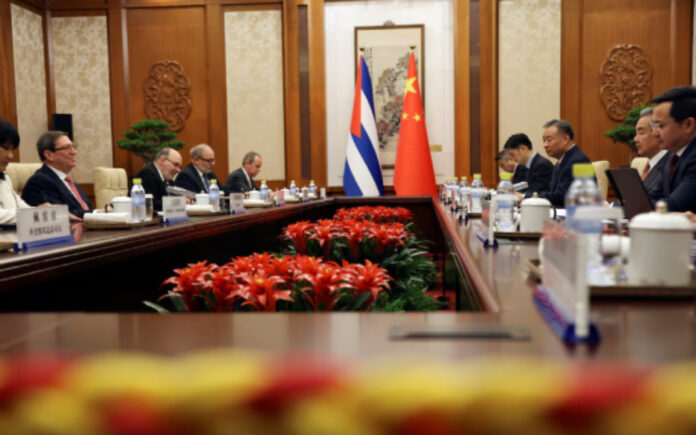Beijing: China is set to host a high-level summit with Latin American and Caribbean nations this week, underscoring Beijing’s push to expand its influence across the Western Hemisphere even as it navigates turbulent trade negotiations with the United States.
The China-CELAC Forum ministerial meeting, scheduled for Tuesday in Beijing, will welcome top officials and heads of state from the region, including the presidents of Brazil, Colombia, and Chile. The summit comes at a crucial moment when global trade realignments are accelerating, and China is seeking stronger partnerships in the Americas.
Chinese President Xi Jinping is expected to deliver a keynote speech at the forum, marking a return to the platform he last addressed a decade ago at its inaugural meeting. According to official Chinese data, trade between China and CELAC nations totaled $427 billion from January to September 2024, making the region a strategic economic partner for Beijing.
The forum takes place shortly after a weekend of trade discussions between U.S. and Chinese officials that ended on an optimistic note. While American negotiators described a “deal” aimed at reducing the U.S. trade deficit, their Chinese counterparts reported that both countries had reached an “important consensus” and agreed to initiate a new round of economic dialogue. A joint statement from both sides is expected Monday.
The China-CELAC Forum represents an alternative vision to the United States’ longstanding dominance in Latin America, particularly as the Trump administration continues its hardline stance on trade. Beijing has actively courted a broad coalition of global partners in recent months, positioning itself against what it calls U.S. “abuse of tariffs”.
Since the imposition of steep tariffs—exceeding 100%—by both Washington and Beijing last month, China has increased its outreach across Southeast Asia, Central Asia, and Latin America. The country has urged trade allies to resist “unilateral bullying” and embrace multilateral cooperation.
Progress with the European Union has also advanced, as China agreed to engage in discussions over minimum pricing for Chinese-made electric vehicles—another sign of its willingness to address contentious trade issues multilaterally.
Also Read | Survey Finds Global Image of US Now Worse Than China’s
The China-CELAC Forum has become a cornerstone of Beijing’s strategy to deepen economic and political ties with Latin American and Caribbean countries, particularly under the Belt and Road Initiative (BRI). Through the BRI, China has invested in infrastructure and port development projects across the region.
Tensions with the U.S. remain visible in areas such as the Panama Canal, where President Donald Trump has hinted at regaining American control. A recent $23 billion acquisition by BlackRock of Hong Kong-based CK Hutchison’s port assets near the canal, which Trump hailed as “reclaiming” U.S. influence, triggered Beijing’s unease and led to a regulatory review.
Focus on Commodities and Infrastructure
China is the largest buyer of commodities from Latin America, including copper, iron ore, and lithium. The summit coincides with the state visit of Brazilian President Luiz Inácio Lula da Silva, during which more than a dozen bilateral agreements are expected to be signed. China is Brazil’s top export market, driven by massive shipments of soybeans, iron ore, and crude oil.
Last year alone, China imported $37 billion worth of soybeans from Brazil, consolidating its role as the country’s primary supplier. Beijing recently resumed soybean imports from five Brazilian firms previously suspended over phytosanitary concerns, further bolstering trade ties.
Chilean President Gabriel Boric confirmed via social media that he would attend the summit and meet with President Xi. Discussions may include investment from Chinese firms in Chile’s lithium sector—an area of growing interest after Chinese metals group Tsingshan reaffirmed its intention to explore opportunities in Chile’s downstream lithium industry.
Also Read | U.S. Drug Price Cuts Threaten Indian Pharma Industry’s Bottom Line
Beyond commodities, infrastructure projects are also expected to feature prominently in the summit’s agenda. The meeting is seen as a stepping stone toward the BRICS Summit to be hosted in Rio de Janeiro this July.
While Panama exited the BRI earlier this year, Colombia has signaled interest in joining, following Peru’s example. The BRI-backed Port of Chancay in Peru was inaugurated six months ago to enhance maritime connectivity between China and South America.
As global trade relationships shift, China’s outreach to Latin America through the CELAC framework positions Beijing as a growing force in a region traditionally dominated by U.S. influence.



